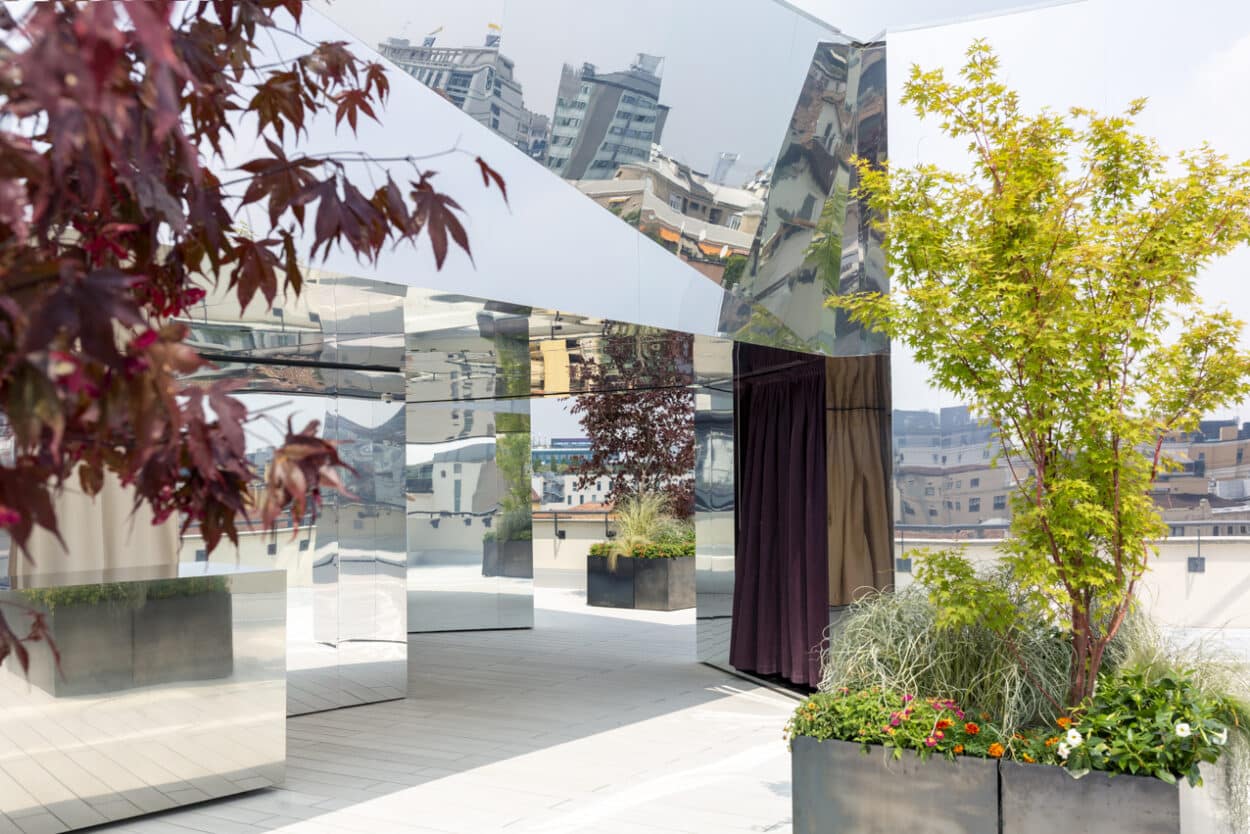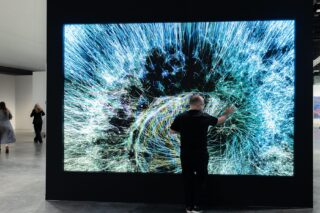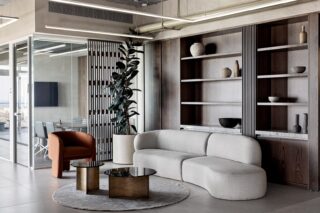On the rooftop of the Buccellati showroom, Stefano Boeri Interiors designed the layout of four enclosed spaces in which visitors can be immersed into entirely different worlds with a common theme: l’art de la table.
June 6, 2022—For Milan Design Week 2022, in parallel with Salone del Mobile, Italian brand Buccellati prepared a rooftop treat for its exclusive guests. Inside four enclosed environments, the layout of which was designed by Stefano Boeri Interiors, visitors stepped through a thick curtain entrance and were instantly transported beyond the current time in Milan.
Curator Federica Sala assigned each space to one renowned designer or studio in which they had to tackle the notion of rediscovering the centrality of the table as a place of excellence where social relations can be practiced; a celebration of conviviality that puts values such as empathy, kindness and grace back at the center. The exhibition stems from Giovanni Della Casa’s famous treatise Galateo (1558) and from Baldassar Castiglione’s earlier Il libro del Cortegiano (1513-1514). Galateo, a name referring to the rules of polite behavior, was greatly considered by each designer as they created a collection for Buccellati and assembled the perfect space to match the new kitchenware.


Spanish-Born but naturalized Milanese designer Patricia Urquiola interpreted the brand’s Tahiti Collection: Picnic. For the occasion Urquiola plays with the idea of table etiquette, transferring it to the image of a sophisticated picnic basket. An invitation to find enjoyment within nature with the iconic 1960’s cutlery by the maison. Once entering the space, one steps instantly into a cool temperature accompanied by the smell of nature with a view of a parc-style picnic setting as the back wall. A manufactured breeze sent the greenery installed along the wall to lightly sway as though we were truly in a wild field with sporadic trees and bushes. The kitchenware
The installation is inspired by the picnic hamper, an item linked to ancient popular tradition and the idea of togetherness by its very nature. But Urquiola does not decline the concept literally but rather translates it into a symbolic abstraction where conviviality and nature meet in legendary fantastications. The metaphorical banquet thus becomes a space entirely covered in cork, where seemingly floating in the center is a grill that recalls the typical pattern of checkered tablecloths, emblematic of every picnic. Upon this background dance Buccellati’s Tahiti kitchen sets in silver and bamboo (the name of the collection is an homage to the uncontaminated landscapes of Polinesia) and the precious painted “Double Rouche – Florence Furnace” porcelains made by Buccellati in collaboration with Ginori 1735. The tartan tablecloth is made from polyethylene terephthalate (PET), is 100% recyclable and was handwoven.
“The installation reflects on the theme of being at the table from an unusual perspective,” Patricia Urquiola said in a press release. “I wanted to reinterpret the precious Buccellati collections making them less severe and more casual. That’s why I created an out-of-the-ordinary banquet capable of reminding us of happy times spent with our loved ones, surrounded by nature.”

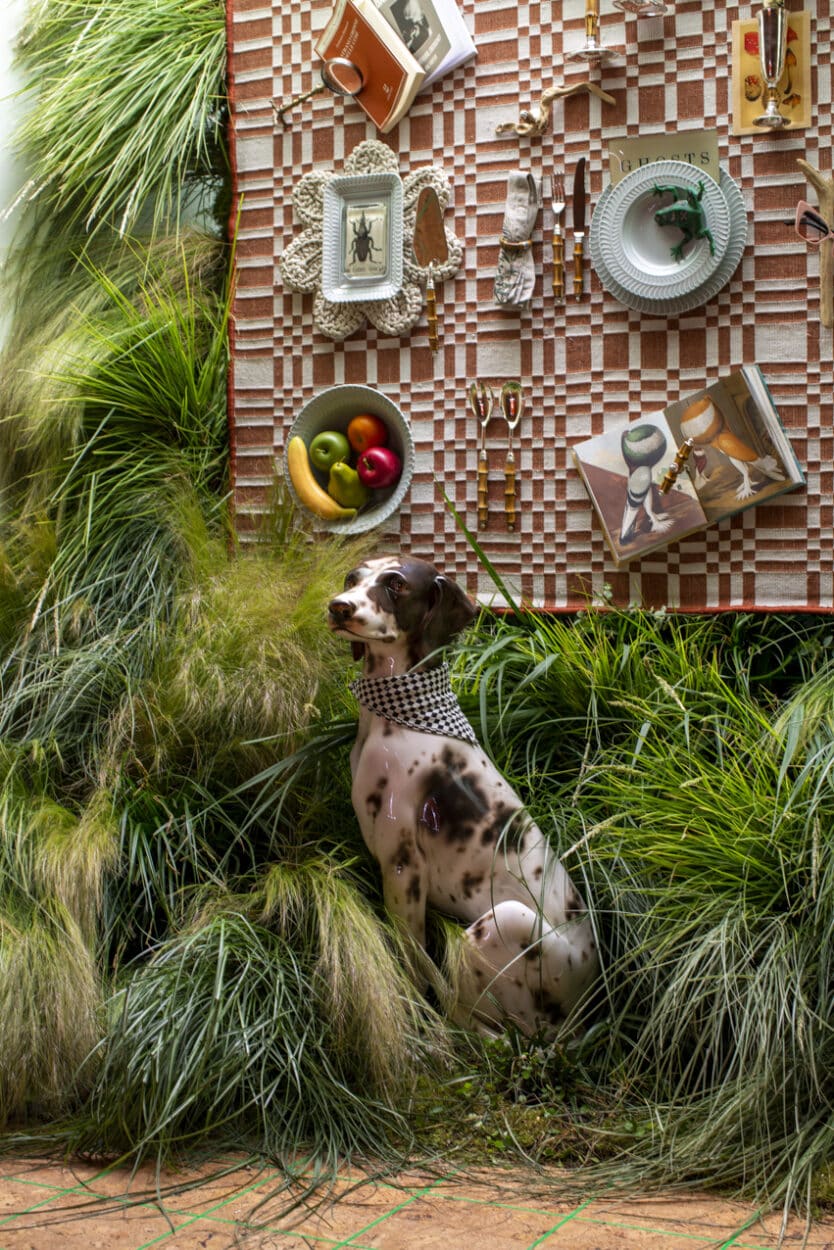

Dimore Studio, founded by Britt Moran and Emiliano Salci, brought its unconventional approach inspired by architecture, fashion and design to interpret Buccellati’s Doge Collection, a homage to the city of Venice, where extraordinary silver craftsmanship is further enriched by the addition of stones and pearls.
In its very risqué space entitled 70s REMIX, the designers chose a silver service recalling ancient Venetian tastes and transports it to the dining room of a 1970s apartment. Monochromatic blocks in deep tones – aubergine and soft nuances of brown – delineate the spaces and volumes of the modular furniture which provides the ambiance with a retro allure, whilst the integrated exhibition planes allow for the lodging of works of art and historical design pieces.
The materials employed establish a game of contrasts: cold and levigated like the brushed steel mirrors and elements, or soft and warm like the seat coverings, rug and floating flanges that hang from the ceiling lamps. Britt Moran and Emiliano Salci adopt the ways and styles of Maria Pergay for use in extensive hatchings and the styling of silverware and ceramics, those of Nanda Vigo for the material conversations, from Pierre Cardin for the refined chromatisms, elaborating historical references with a personal and contemporary twist. They construct a set of cinematographic flavor, accompanied by a soft electronic music background where the focal point is the table designed by Salci with a raised plateau in lacquered wood upon which – in a deliberately non-rigorous manner – are displayed the carafes, vases and jattes of Buccellati’s Doge Collection, connotated by the admixture of silver and cuts of lapis lazuli and red jasper.
“The luxurious decorum of the Doge Collection blends exquisitely with the linearity of the 1970s furnishings, while the informal table setting, intimate and friendly allows for the exploration of conviviality which goes beyond the traditional idea of sharing,” Britt Moran and Emiliano Salci said in a press release.

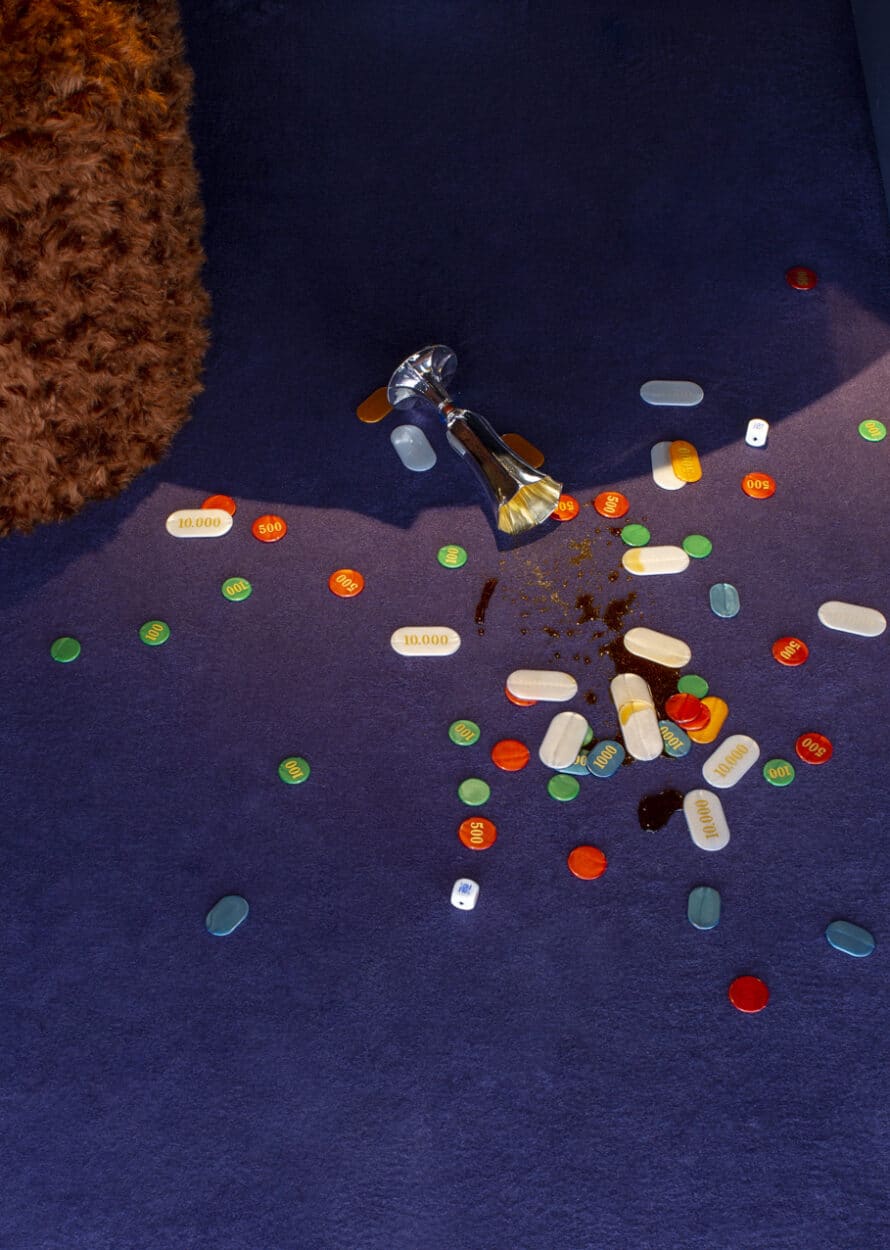
Paris-based designer Chahan Minassian interpreted of Buccellati’s Caviar Collection, a historical one by the maison dating back to the 30s and featuring the signature caviar beads. Minassian’s taste for timeless pieces of art will reinforce the art behind this collection even in its more recent iteration with the addition of Murano glass elements.
To celebrate the art of the dining table, Chahan Minassian created an intimate boudoir immersed in a sumptuous quiet. The French designer imagines his installation Dinons au Boudoir as a triumph of prized objects, much like a jewelry box, where the juxtaposition of varied fabrics, exuberant fittings and elegant accessories reflects the eclectic tastes of the collector and homeowner, who is inevitably attracted by the refined detail. In this stratified tableau, elements designed by Minassian himself can be encountered, among which the pyramid lampshades, the turquoise Murano Glass ceiling lamp or the monumental separeé with rock crystal panels and rare historical pieces such as Harry Bertoia’s Bush sculpture of the late 1970s, the Neo-Egyptian styled chairs of Horacio Cordero, or as the – pièce de résistence – a brutalist table by Argentinian designer Hugo Cesar Tonti, with a bronze base which retraces the vigorous bearing of fleshy agave leaves.
The tablescape highlights the delicacy of the silver service which includes ice buckets, flûtes, dishes and cutlery from Buccellati’s Caviar Collection, studded with a myriad of small spheres joining to form decorative bands. Porcelains and blown glasses designed by Minassian complete the table. The designer pays the utmost attention to detail and the tactile quality of the objects he uses, for the experience to be a pleasure for the eyes before being one for the palate.
“To celebrate the Caviar Collection,” Chahan Minassian said in a press release, “I imagined an intimate supper set in the relaxed but opulent alcove atmosphere, where all senses become exalted.”

Born and bred in high-end interior design, Ashley Hicks relied on his contemporary interpretation of aristocratic British aesthetics to reimagine Buccellati’s Rouche Collection, with pieces bearing ancient Greek elements beloved by the British designer.
Inspired by great historical banquets, Ashley Hicks’s installation A Magical Tent celebrates the social ritual of the banquet, re-evoking the fabulous atmospheres of the Baroque era which took the spectacularization of food to an extreme through elaborate mise en table and displays of silver as a symbol of power. To emphasize the theatrical dimension, the English designer builds the scene inside a red tent – traditionally the color of hospitality and receptivity – which is accessed from the terrace turned into a garden: one crosses a dark area dimly lit by a chandelier to reach a fairy-tale table flooded in daylight; a mirrored wall framed by sumptuous drapes multiplies the space and accentuates the sense of enchantment, confusing reality and dreams.
Hicks imagines a magnificent feast – all shadows and light, allegory and magic – and sets the scene of a fantastic marine world. Dipping into the Buccellati repertoire, he sets the group table with shells dressed in silver from the Marina Collection, the wavy-profiled trays harking at the sea of the Rouche Collection and a big centerpiece in the shape of a fishing basket (a piece designed by Mario Buccellati around 1960), together with the Ginori 1735 porcelain plates and the false porphyry totems (or other stone finishings), i.e. the celebrated sculptures Hicks made for the occasion, adorned by the silver detail of the Milan Maison.
“The magic tent inspired by 17th-century banquets and their lavish dishware,” the designer said in a press release, “is a celebration of the magnificence of silver with its capacity to arouse marvel and enchantment.”

